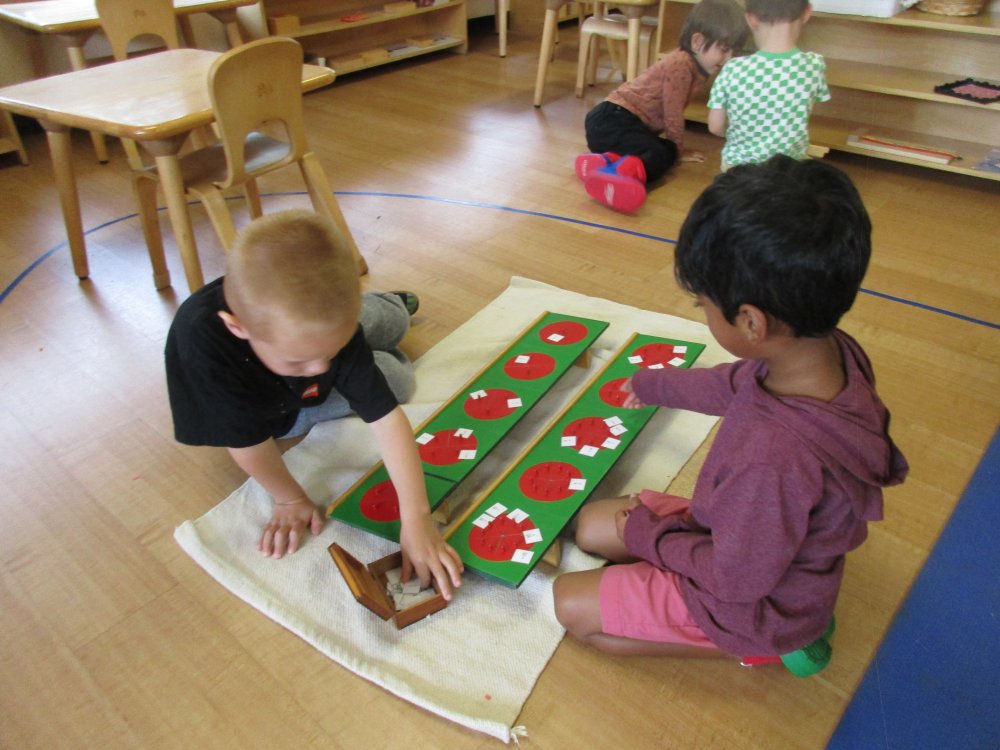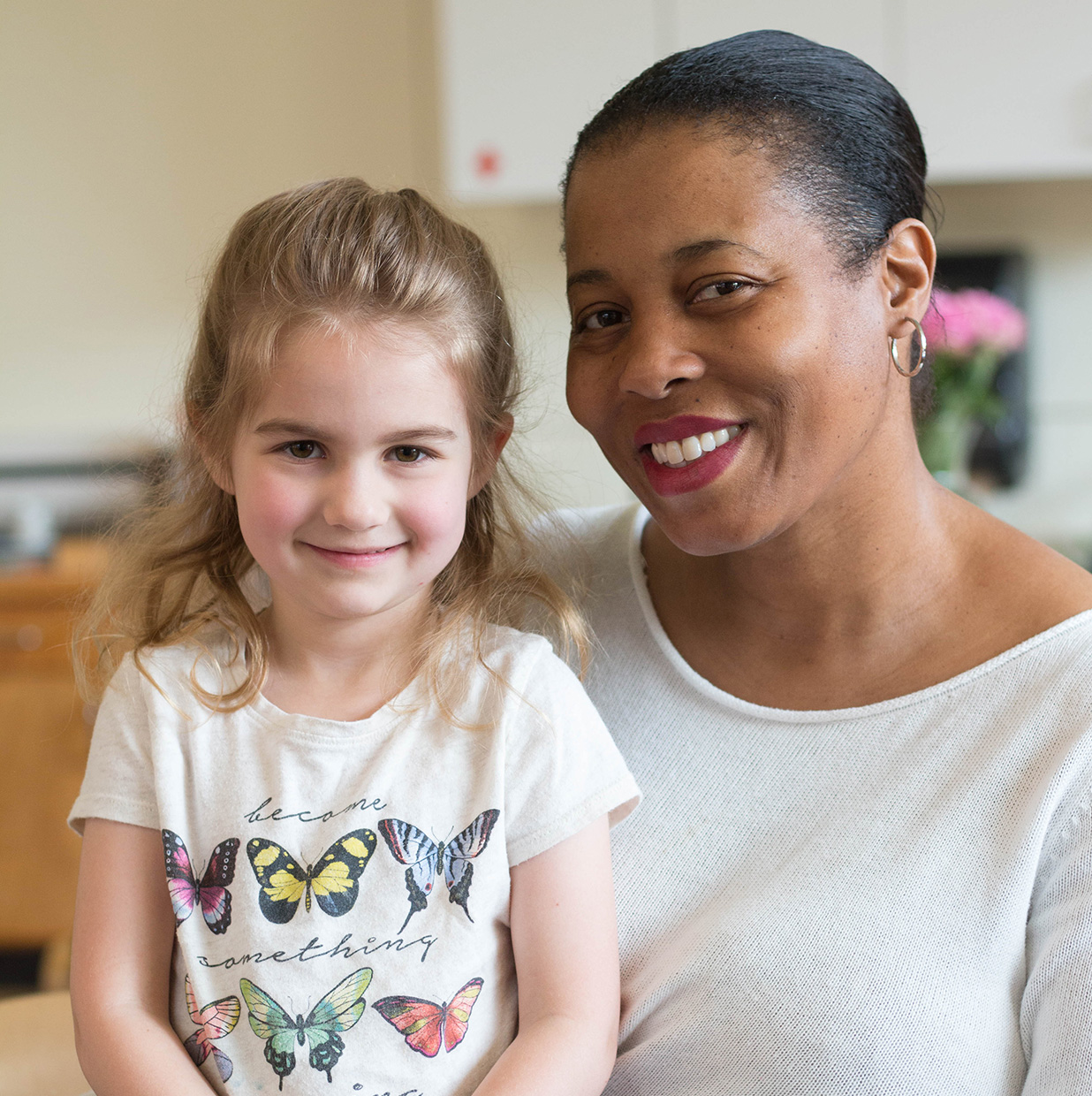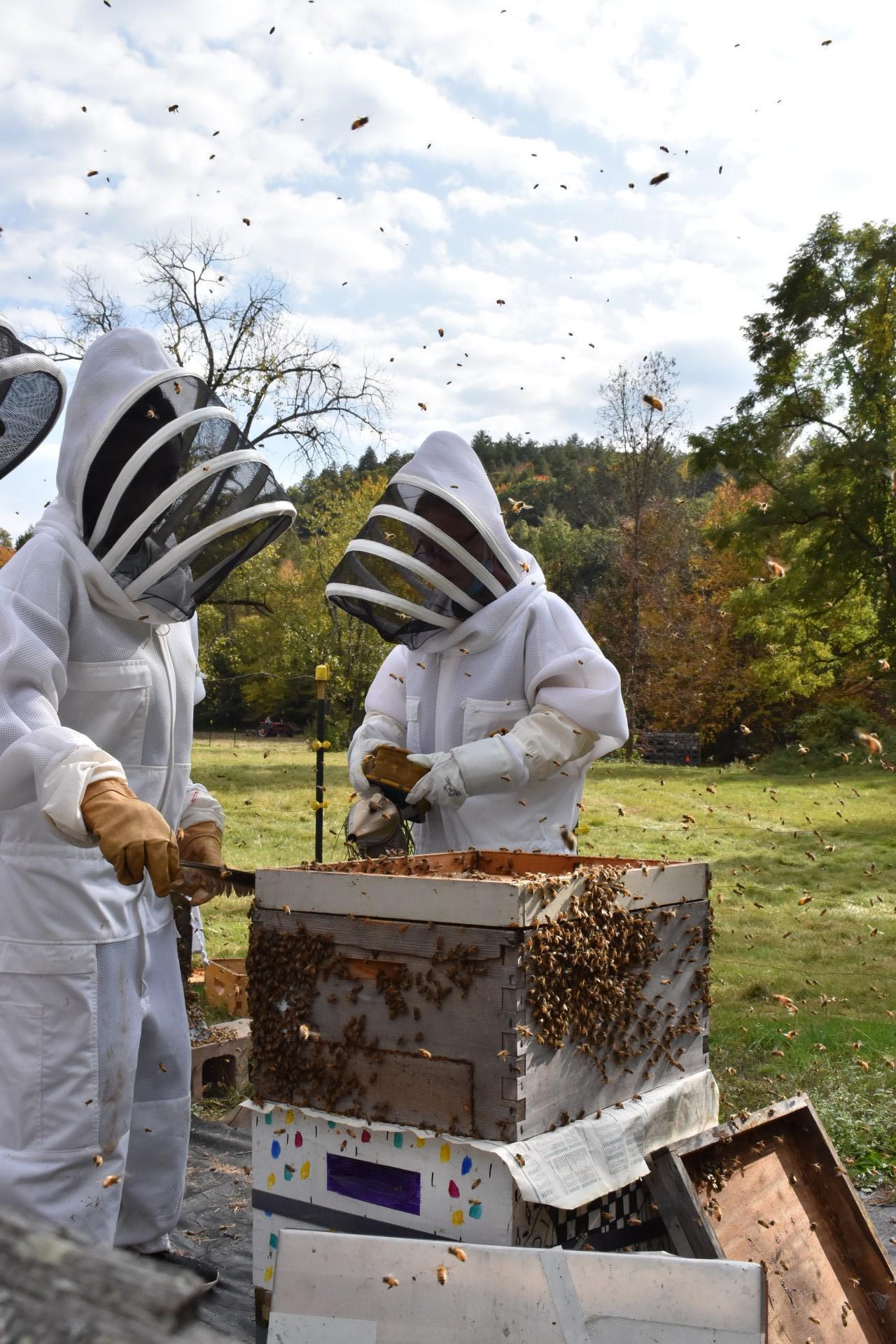Understanding the Primary Math Curriculum by Orla Black, Director of Programs
November 27th, 2024
Dr. Maria Montessori designed a Primary Math Curriculum that was comprehensive and hands-on for the child. In the Primary Math Curriculum, children are not “taught” math in the traditional sense; instead, they explore it with their senses. From the moment the child walks into the Primary classroom, they are preparing themselves for their later math presentations. The child’s preparation for the math curriculum begins with the exercises of Practical Life; then comes an introduction to the Sensorial materials. When the teacher observes the child is ready, the first math presentation will take place after the child has been indirectly prepared for some time.
The Importance of Hands-On Materials
One of the central tenants of the Montessori curriculum is the hands-on materials. The hands play a central role in conveying information to the brain. This is something Dr. Montessori discovered through her observations of how children learned and developed. She was way ahead of her time – 100 years to be precise!
Neuroscientists can now demonstrate just how much of our brain’s geography is dedicated to interpreting information from the hands, and it’s vast. We also now know that Montessori was right about hands-on, sensorial, learning: young children are primarily sensorial learners – they learn concretely first, then move on to abstract concepts. That’s why it’s so important for learning to happen in the right order.
Connecting the Math and Practical Life Curriculum
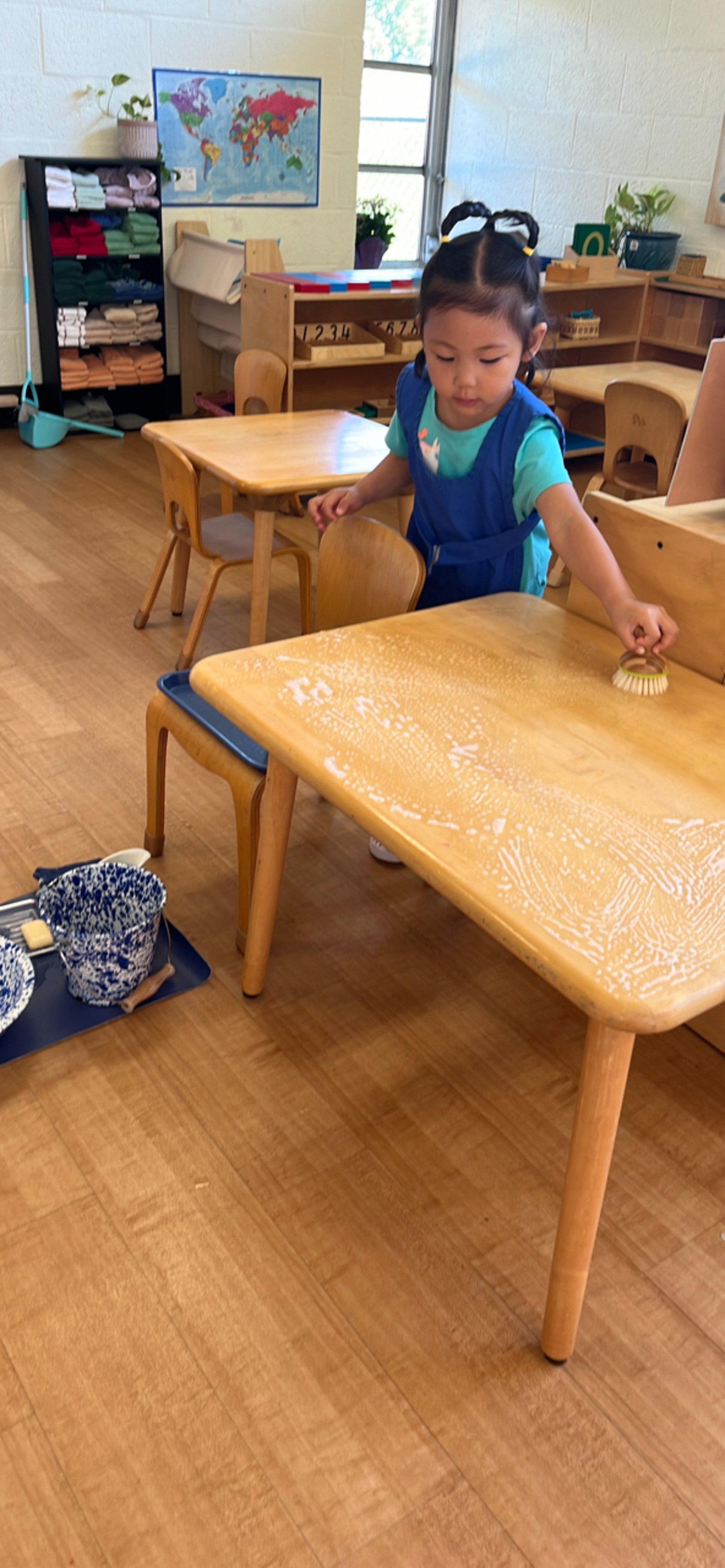
The path connecting Practical Life to Math is difficult to perceive, so let’s spend some time on it: children in our Toddler Program and our first-year Primary students spend a great deal of their day absorbed in Practical Life exercises – polishing objects, tending to plants, carefully pouring liquids or moving small objects from one container to another, and so on. Each of these activities has important developmental benefits that strengthen learning later on.
These developmental benefits are: the capacity to concentrate for extended periods, a love of order, the ability to remember and follow a sequence of steps, well-developed fine motor skills, the ability to work with exactness, the confidence that comes from a job well done, and the social skills needed to take turns with classroom materials, care for them, and learn from others while they work
Without fine motor skills, it is more difficult to work with the Math materials; without a love of order, exactness and sequence, a child will find it more difficult to follow the steps required by the Math exercises; without confidence, a child will not persist; without concentration, there is little opportunity to learn. And without socially skilled children, our classrooms would become chaotic.
Connecting the Math and Sensorial Curriculum
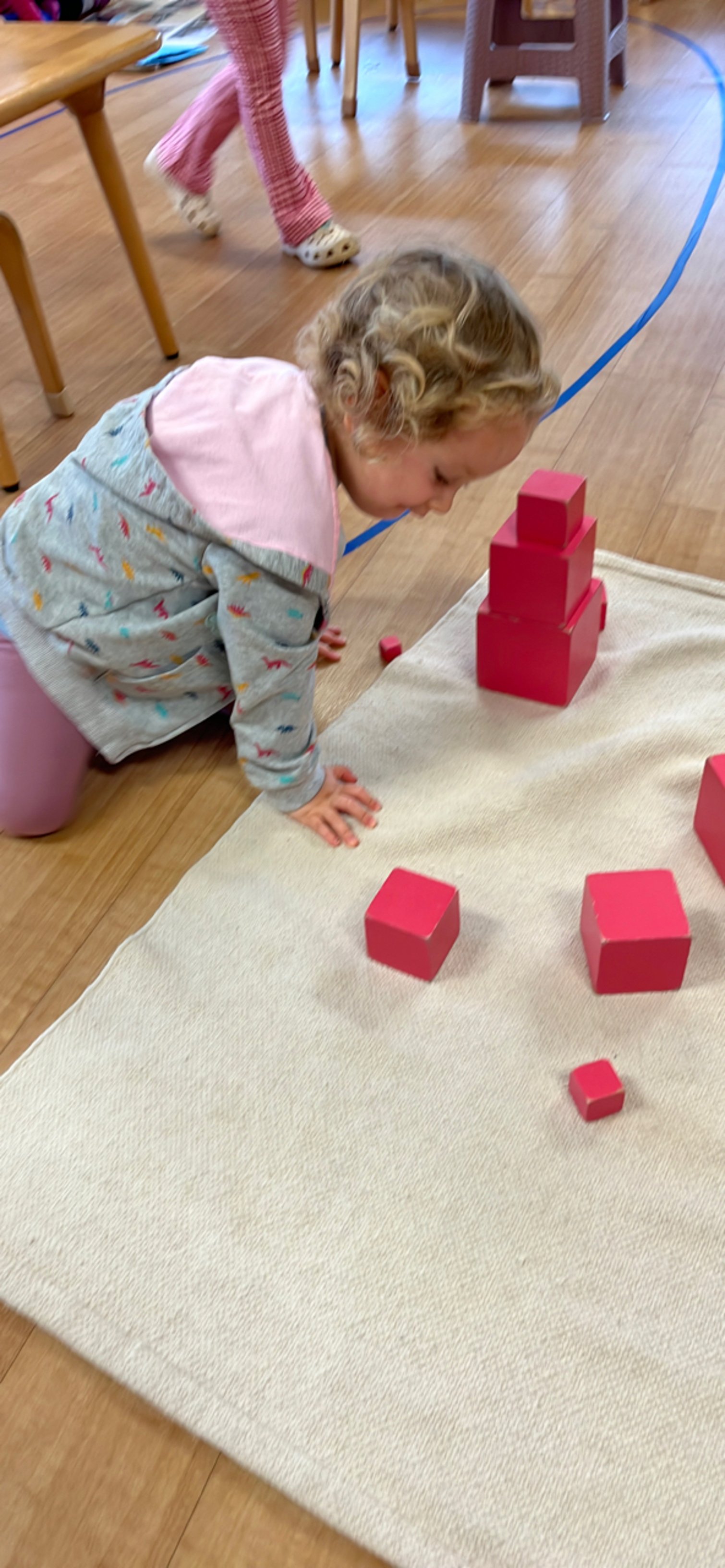
The Sensorial materials provide a direct bridge to the Math materials in the classroom. The math-related Sensorial materials include the Red Rods, the Brown Stair, the Pink Tower and the Solid Cylinder Blocks. These materials introduce mathematical concepts in their most concrete form. For example, the Red Rods provide a hands-on introduction to length, the Brown Stairs to width, the Pink Tower to volume, and the Cylinder Blocks to width, height, length and breadth.
All of these Sensorial materials reinforce the decimal system. In every exercise, the child works with ten pieces – ten gradations of the same concept.
Beginning Math Materials
After a child has exhausted the Sensorial materials – absorbed the essence of the material so to speak -- they begin to work with the Math materials designed to help the child understand the numbers 1 through 10. Mastery includes: applying numeric symbols to appropriate quantities, counting in order, distinguishing between odd and even numbers, and understanding that zero represents “nothing.” (Understanding that zero is also a place holder comes later.)
The very first math material a child works with is called the Number Rods. These are exactly like the by-now-familiar Red Rods from the Sensorial area, but each rod is marked off in units with alternating sections of red and blue paint.
The child first touches the units on a rod, and we give them the words “one,” “two,” “three” and so on. Later, while touching each rod in turn, she or he learns to name each rod according to the number of units it has. Working with the shortest rods first, the child progresses. We ask him or her to “give me six,” “give me nine” to check understanding. Later, the teacher picks up a rod and asks, “what is this?”
Next, a child will be encouraged to place combinations of rods together, and they see how two smaller rods placed together can equal a larger rod. Only when a child can name each rod correctly and in order, and has worked through the rod combinations, do we introduce the symbols for the numbers.
In a separate lesson, we introduce Sandpaper Number cards. We help the child trace each number with a finger, and say the number. When a child has mastered this exercise, we show him or her how to match each number with the correct rod.
There are many more materials in the classroom to support the child learning 1 through 10, odds and evens, zero, etc., we invite you to connect with our Primary team to learn more.
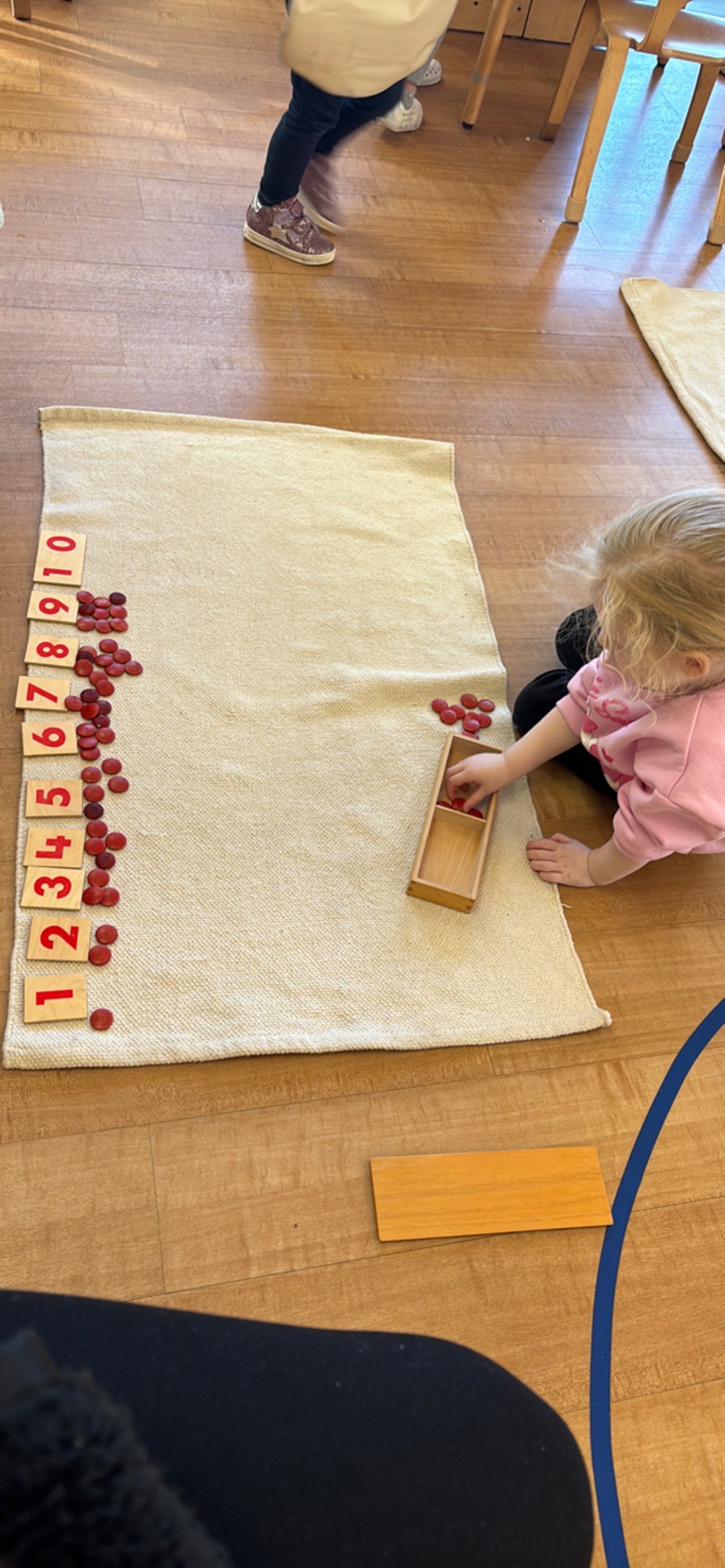
The Introduction to the Decimal System
After the child understands the numbers 1 to 10, we move directly to the decimal system, where the children learn the place value of numbers -- units, tens, hundreds, thousands -- and learn to do addition, subtraction, multiplication and division by working with a variety of materials and playing “math games.”
Once a child masters place value, they use the Golden Beads to do all four of the operations. As the children work with the Math materials, they actually “experience” the four operations in a very concrete way. They can work at this level because of their very firm grasp of place value.
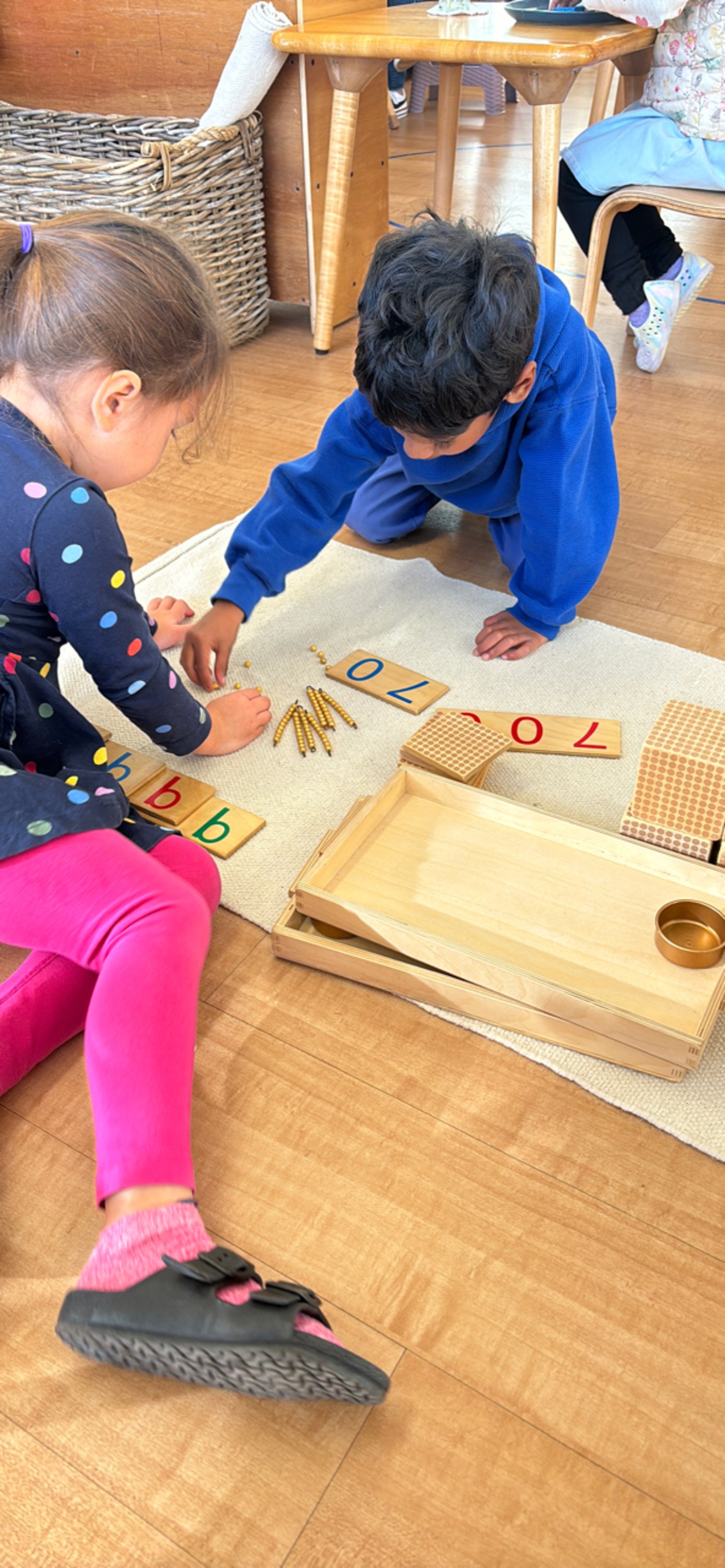
Teens and Tens
At the same time as the child is introduced to the Decimal System, they will also be working on understanding the teens and tens. First, they learn the teens, then linear counting from 10 through 99. Maria Montessori observed that, in their Primary years, children go through a “sensitive period” for order and precision and that they seem driven to count things. So, strange as it seems to adults, it is no burden for a Primary child to count from 10 to 99 many times over; eventually, they count in sequence from 1 to 1000.
This part of the curriculum also extends to skip counting – counting by 2’s or 5’s and so on. Skip counting lays the foundation for squaring and cubing – again simply and brilliantly done with the help of the beads.
The children may dip back into earlier materials to solidify what they already know and strengthen connections. They extend their work with earlier materials. They are also introduced to various materials that help them memorize math facts. And they work on writing their numbers.

Math Facts in the Primary
We do memorize math facts in Montessori, but only after a child truly understands what the math facts really mean.
Once a child has his or her math facts well in hand, they are able to work more without the materials and in an abstract way. They may do multiplication and division using only math symbols, and use the materials to check themselves. And, if a child demonstrates a very firm grasp of what we call “the oneness of one,” they may begin to work with fractions.

Transition to the Elementary Classroom

The Primary and Elementary curricula flow seamlessly into one another. How far a child moves along the curriculum during the Primary years is highly individual. Some children with a real passion for math will dynamically add, subtract, multiply and divide fractions, before they leave Primary, but this is unusual.
We want to keep the child’s intrinsic motivation – their love for learning – burning bright, so we do support them as they pursue their passions. But it’s also the teacher’s job to ensure that each child develops a balanced foundation. Sometimes, a teacher must be creative; for example, a number of the math games require the participation of two or more students, so a social child may be enticed simply by the chance to work with friends, even if they don’t care for math at the moment.
There’s a world of difference between reading about the math curriculum and getting your hands on the materials your children are using now, or may use next year. It’s like reading the menu instead of enjoying the meal! We invite you to connect with your child’s teacher to learn more about our Montessori Math Curriculum.

